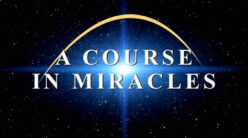Introduction: In a world often characterized by chaos and uncertainty, the search for inner peace and personal transformation is a universal pursuit. “A Course in Miracles” (ACIM) offers a profound and unique approach to achieving these goals. Rooted in spiritual principles and designed to shift one’s perception of the world, ACIM has gained a devoted following since its inception. This article delves into the essence of “A Course in Miracles,” exploring its history, core teachings, and the impact it has had on countless lives.
Understanding the Origins
“A Course in Miracles” was channeled and compiled by Dr. Helen Schucman, a clinical psychologist, and her colleague Dr. William Thetford in the 1960s and 1970s. Schucman claimed to receive the material through inner dictation from a higher source, which she identified as Jesus Christ. The result of this process was a three-volume book containing a Text, Workbook for Students, and Manual for Teachers. The teachings of ACIM emphasize the concept of forgiveness, the healing power of love, and the transformation of one’s perception of reality.
Core Teachings of ACIM
At its core, “A Course in Miracles” aims to guide individuals towards a fundamental shift in their perception of the world and themselves. Some of its key teachings include:
- Forgiveness: ACIM places a central emphasis on forgiveness as a means to inner peace. It teaches that forgiving others and ourselves is not only a moral act but a transformative process that liberates us from the shackles of resentment and bitterness.
- Illusion vs. Reality: The course proposes that the physical world is an illusion, shaped by our ego-driven perceptions and judgments. True reality is found in a state of love and unity, transcending the limitations of the material realm.
- Miracles: In the context of ACIM, miracles are shifts in perception that occur when we choose love over fear. These shifts allow us to see beyond the surface of situations and perceive the inherent goodness and interconnectedness of all things.
- Relationships: ACIM offers insights into the purpose of relationships, suggesting that they are opportunities for growth, healing, and practicing forgiveness. When approached with love and a willingness to learn, relationships can become vehicles for transformation.
- The Power of Thought: The course teaches that our thoughts shape our experience of reality. By choosing loving and positive thoughts, we can cultivate a more harmonious and joyful existence.
Impact and Controversy
“A Course in Miracles” has garnered a diverse range of reactions since its publication. For many, it has been a guiding light that has helped them navigate challenges, find inner peace, and experience personal transformation. Its teachings have been praised for their depth and potential to heal deep-seated wounds.
However, ACIM has also faced criticism and controversy. Some religious groups have labeled it as heretical due to its departure from traditional Christian doctrines. Additionally, the claim of divine dictation and its non-dualistic philosophy can be challenging for some individuals to grasp.
Conclusion
“A Course in Miracles” offers a unique pathway to inner peace and personal transformation through. Its teachings on forgiveness, perception, and the power of love. Regardless of one’s spiritual background, the course’s emphasis on shifting perspective and choosing love. Over fear holds the potential to create positive change in our lives. Whether embraced as a spiritual guide or approached with curiosity. ACIM invites us to explore the boundaries of our perception and discover. A deeper connection to the essence of our being.





